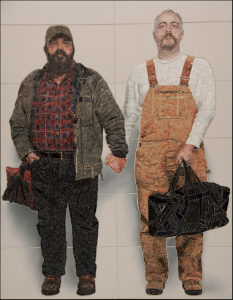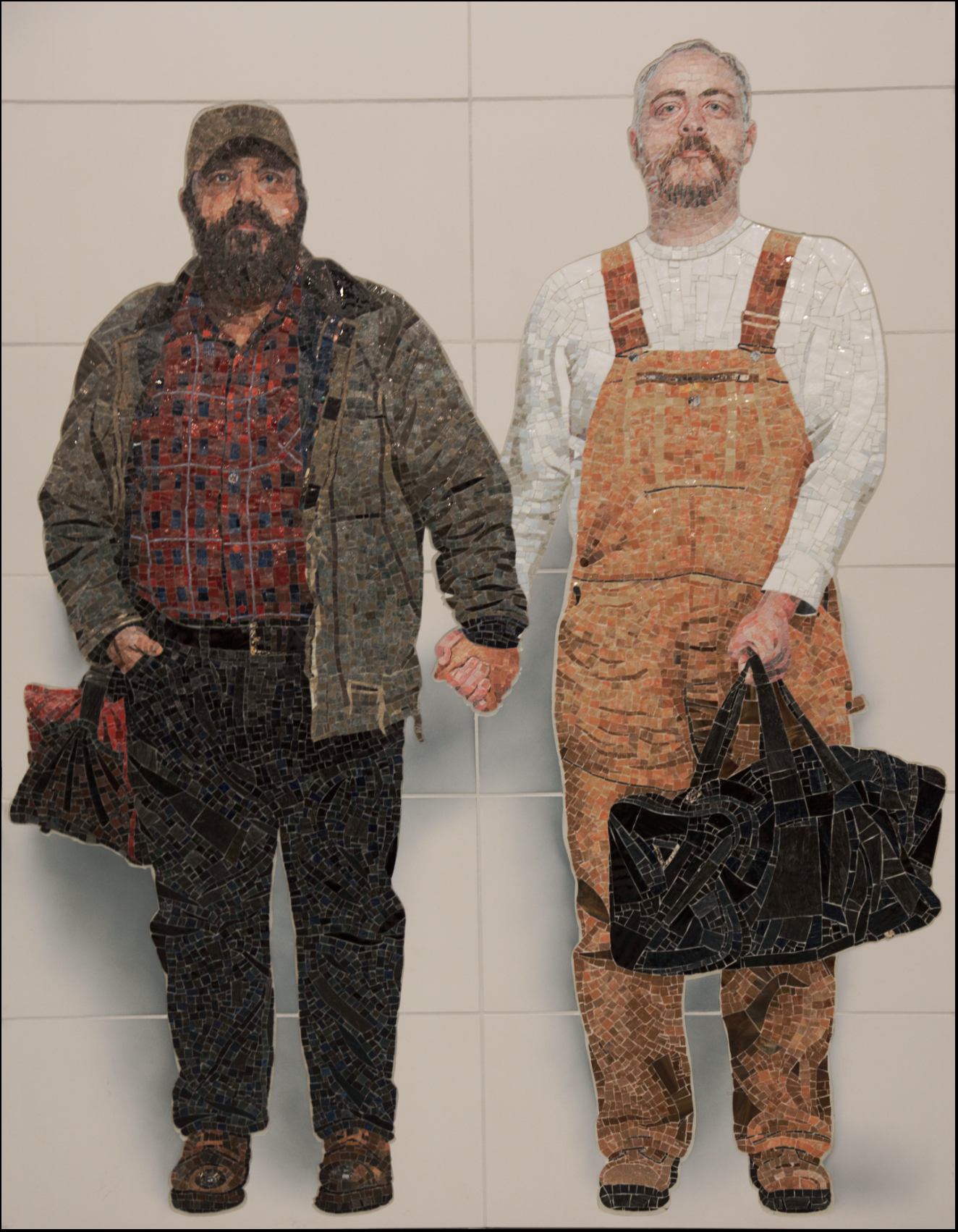Perfect Strangers
by Vik Muniz
At the 72nd Street Station of the New York City Subway system
THERE IS an otherworldly infrastructure beneath the streets of New York City, a subterranean labyrinth with hidden chambers and disused stations, gargantuan water pipes and aqueducts, and tree roots embedded in rock, a realm where so-called mole people live among a rodent animal kingdom. The New York subway has 850 miles of track running though tunnels, under rivers, and elevated above streets and on bridges, an intricate logic of routes, crisscrossing boroughs, transporting people from the insularity of neighborhoods delineated by class, ethnicity, race, and sexual orientation. For many, life is organized around the subway system that takes them to market at Herald Square, to work on Wall Street, to have some leisure on Coney Island, or to cruise at Jacob Riis Park.

Like notes from the underground, mysterious narratives and images emerge to reveal life experiences with distinct behaviors and a cast of characters: the subway as inspiration. In “The Tunnel,” a section of Hart Crane’s epic poem The Bridge, he wrote about an unnerving, whirlwind New York City subway ride: “In the car, the overtone of motion underground, the monotone of motion is the sound of other faces, also underground.” The first edition of his poem included three photogravure prints by Walker Evans, who was also enthralled by the subway, making a three-year photographic series of more than 800 subway portraits, collected in the book Many Are Called. “The guard is down and the mask is off,” Evans wrote, “even more than when in lone bedrooms (where there are mirrors). People’s faces are in naked repose down in the subway.”
New faces emerged when in January 2017 a series of mosaics became part of the tiled walls of the 72nd Street Station at the new Second Avenue Subway. Vik Muniz’ Perfect Strangers was the transformation of photographs into life-size mosaics installed throughout the mezzanine and entrance area.
Three years ago, newly married Patrick Kellogg and Thor Stockman visited a friend in Brooklyn who was working on an art project proposal for the new Q-train extension of three stations along Manhattan’s Upper East Side. A photographer made a portrait of them, but they never expected that the image would become a life-size mosaic. “It happened serendipitously,” Stockman told this writer. He explained that they were friends with one of Muniz’ studio assistants who invited them to drop by the studio. They posed for a photograph without direction. He imagined, “How can I be myself?” and they held hands. Muniz chose that image for one of the mosaics in his portfolio; his project was selected from hundreds of proposals.
The Kellogg-Stockman mosaic references the working-class: the two men could easily be transit maintenance workers emerging above ground after walking along subway tracks. The image references those of the Great Depression, when WPA-commissioned murals appeared, often in post office murals, as the people’s art to celebrate the working lives of ordinary Americans. But, of course, same-sex hand-holding bends that frame, subverting hetero-dominant culture. Kellogg and Stockman appear as resolute dreamers, gazing with dignity and grace into the horizon toward the future.
By chance, a first meeting occurred in February 2017 at various Perfect Strangers murals between Muniz, Kellogg, and Stockman. The artist and his subjects hadn’t met before because the mosaic portrait was created from a photograph. I had arranged to photograph the subjects at the mural, arriving early for the shoot, I noticed Muniz standing at another panel, being interviewed and videotaped by media from Brazil and China, and I implored him to wait for his two subjects, who were only a few subway stops away.
The public representation of Kellogg and Stockman, a same-sex married couple, must be considered a courageous act. It certainly reverberates for them individually and within their relationship. The portraits could be taken at face value as wonderful images of a same-sex couple; Muniz maintains that “It’s not political.” Or is it? Art historian Jonathan David Katz argues: “What makes it a turning point is it isn’t gayness singled out and made the theme. On the contrary, the work naturalizes gayness within the fabric of the city, and in so doing, that’s actually an even more powerful message.” Stockman is philosophical: “As for being a turning point in depictions in public art, wouldn’t it be great if more of our lives were reflected in our culture and art, how much that would contribute to greater self-worth, less substance abuse, fewer wasted lives and suicide?”
Kellogg and Stockman are social-media advocates. They posted photographs of the mosaic on Facebook, and it went viral with many of their friends wanting to pose with them in front of the artwork. When out-of-town friends visit, they go to the mural and take selfies. Folklore about the mosaic is evolving. Gay couples go the mosaic to propose to each other; opposite-sex allies pose holding hands in front of it. The longing for art is often about belonging and locating oneself, and the mosaic is a fanfare for the common gay person.
Steven F. Dansky is the founder of Outspoken: Oral History from LGBTQ Pioneers.






